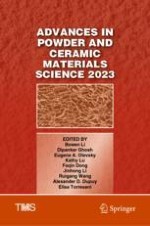This collection emphasizes the advances of powder and ceramic/glass materials in the fundamental research, technology development, and industrial applications. Ceramic materials science covers the science and technology of creating objects from inorganic, non-metallic materials, and includes design, synthesis, and fabrication of ceramics, glasses, advanced concretes, and ceramic-metal composites. In recent years, the hybrids of ceramic and metallic materials have received plenty of interdisciplinary inspirations and achievements in material processes and functional applications including ionic conductors, catalysis, energy conversion and storage, superconductors, semiconductor, filtrations, etc. Topics cover, but are not limited to:· Silicates, oxides, and non-oxide ceramics and glasses
· Synthesis, characterization, modeling, and simulation of ceramic materials
· Design and control of ceramic microstructure and properties
· Ceramic powders and processing
· Catalyst and catalyst support materials
· Fundamental understanding of ceramic materials and processes
· Novel methods, techniques, and instruments used to characterize ceramics and glasses
· High entropy ceramics (and/or entropy stabilized, complex-concentrated, compositionally-complex, multi-principal cation ceramics)
· Bioceramics, electronic, magnetic ceramics, and applications
· Surface treatment and ceramic thin films, membranes, and coatings
· Porous ceramic materials
· Hybrid systems of ceramic, metal, and/or polymer composites
· Ceramics used for extreme environments
· Metallurgical byproducts for ceramic manufacturing
